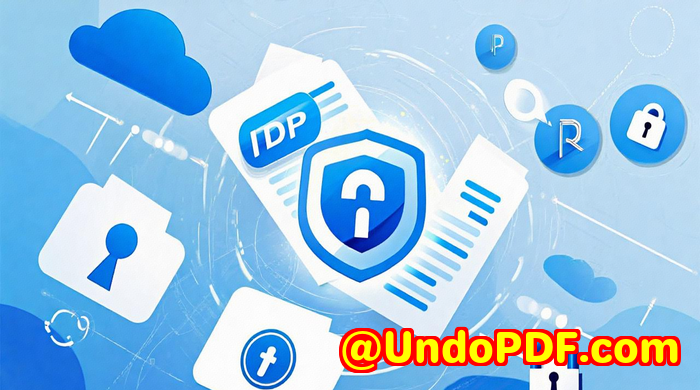Feature-Rich HTML5 PDF Viewer with Annotation API for Education and Research Institutes
Meta Description:
Struggling to annotate PDFs in your browser? This HTML5 PDF viewer makes research collaboration and document markup dead simple.

Ever tried marking up a research paper on a school Chromebook? Total nightmare.
I remember helping a colleague with a digital teaching toolkit. We had dozens of scanned academic papers and PowerPoint handouts, and we needed a way to highlight, comment, and collaborate on themwithout downloading them.
Most tools required plug-ins, had clunky interfaces, or just didn’t support all the formats we needed.
That’s when we found VeryPDF’s HTML5 PDF Annotation Source Code License. No fluff, no extra installs. Just a clean, browser-based interface that worked right out of the gate.
What it does (and why you should care)
VeryPDF HTML5 PDF Annotation Source Code is exactly what it sounds like: a browser-based annotation engine for PDFs and over 50 other file formats.
It runs on Windows, Mac, Linux, iOS, and Android. No plugins. No installs. Just load it in your browser and start marking stuff up.
Perfect for educators, researchers, and academic staff who need to:
-
Annotate lecture slides and documents
-
Collaborate on grant proposals or research drafts
-
Review scanned handouts or reference material
-
Centralise feedback across distributed teams
I’ve tested it across Safari, Chrome, and Firefox. It was smooth every time. No lag, no weird rendering bugs.
How I used it (real story, real wins)
We were prepping course content for a remote learning module. PDF files, PowerPoints, Excel tablesyou name it. Here’s what stood out when we used VeryPDF’s tool:
1. Total Format Freedom
We had a mix of formats: DOCX, PDFs, PNG diagrams from a whiteboard, even a few CAD files.
VeryPDF handled all of it.
And I’m not just talking about viewing. We could annotate, highlight, leave comments, and even export the marked-up files as finalised versions for students.
2. Collaborative Annotation
I worked with two other lecturers on the same documentlive.
We used layered annotations so each of us could review and respond without overwriting each other’s input.
You get everything:
-
Text comments
-
Freehand sketching
-
Point + area comments
-
Highlight & strikethrough tools
And yes, you can burn in annotations or remove them later. Total control.
3. Simple REST API for Integration
We plugged the viewer right into our web-based LMS with a couple of API calls.
Took less than a day.
We didn’t need to teach students how to use it. The interface is intuitivejust like highlighting in a physical book, but smarter.
Why it beat other tools we tried
Let’s be honest. Most online PDF annotation tools suck when it comes to:
-
Cross-browser support
-
Multi-user markup
-
Keeping the original file intact
VeryPDF nailed all of it.
No plugins. Real-time collaboration. Native rendering. And support for PDF/A, DOCX, XLSX, PPTX, DWG, TIFFyou name it.
Others would either choke on a big file or make you download weird desktop clients.
My verdict?
If you’re in education or research, and you’re sick of emailing PDFs back and forth, adding comments in red text like it’s 1998…
Get this tool.
It saved us hours per week, especially when preparing group materials or peer-reviewed publications.
Try it here: https://veryutils.com/html5-pdf-annotation-source-code-license
Test the live demo: Online PDF Annotation Tool
Looking for custom features?
VeryPDF isn’t just about out-of-the-box tools.
They offer custom development services to help you build exactly what you need.
Whether it’s Linux, Mac, or Windows, VeryPDF can tailor solutions using:
-
Python, C++, PHP, JavaScript, C#, .NET
-
HTML5, Android, iOS
-
Virtual Printer Drivers for PDF and image capture
-
API hooks for intercepting system processes
-
Barcode tech, OCR for scanned files, layout analysis
-
Document viewers, converters, and cloud platforms
Got something unique in mind?
Reach out to them here: http://support.verypdf.com/
FAQs
Q1: Can I use this tool without any plugins or desktop apps?
Yes. It runs directly in the browser. No Flash, Java, or extra installs needed.
Q2: Does it support Word, Excel, and PowerPoint annotation?
Yes, it supports Office formats like DOCX, XLSX, PPTX, plus 50+ others.
Q3: Can I integrate it into my own app or LMS?
Absolutely. It offers full source code and a clean REST API for easy integration.
Q4: What kind of annotation tools are included?
Everything from text comments and freehand drawing to highlights, area notes, and strikethroughs.
Q5: Is it safe for student use?
Yes. Annotations don’t change the original file unless you choose to burn them in. Safe, secure, and collaborative.
Tags/Keywords:
html5 pdf annotation tool, pdf viewer with annotation, annotate pdf in browser, education pdf markup, document collaboration tool